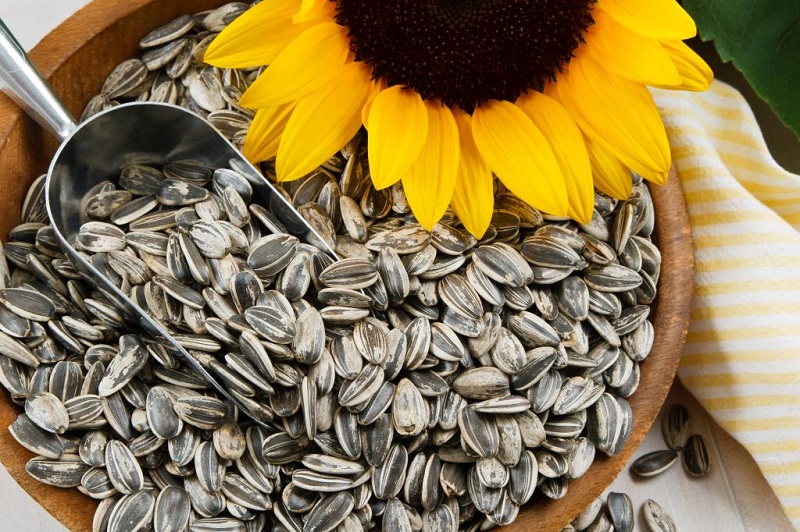Sunflower cleaning is the most important component of post-harvest processing. At this stage, the post-harvest heap is separated into the main crop (sunflower seeds), large and small waste (seeds of other crops, husks, residues of leaves, baskets and stems, mineral and other inclusions), and oilseed impurities (broken, collapsed, spoiled, corroded, rotten, underdeveloped seeds). The latter is of some value and can be used as a food additive for animals or as a component for making fuel briquettes (sunflower seeds are combustible).
Peculiarities of sunflower seeds
Sunflower seeds have distinctive characteristics:
- high oil content (up to 50%);
- low mechanical strength of the shell;
- low hovering speed (3-8.4 m/s, in wheat – 9-11.5 m/s, rice – 8.9-9.5 m/s);
- high porosity (40-60%, in wheat – 35-45%, in rice – 50-65%), which creates difficulties in the process of post-harvest processing..
The grain cleaning machines that exist today can completely solve the problem of cleaning. However, there is currently no machine in the world that can clean sunflower seeds completely from all impurities, as due to the peculiarities of this crop, its cleaning is several orders of magnitude more difficult than for cereals.
Consider the main stages of cleaning:
1. Preliminary cleaning
In the first stage of cleaning (pre-cleaning), we use drum separators or scalpers with an air separator. This operation allows us to remove most of the large impurities such as baskets and stalks, as well as random impurities such as large stones, small rodents and birds. The air separator removes some of the oil impurities and light impurities that are prone to ignition.
This step is especially important when the grain is to be sent to the dryer, as it helps to avoid stagnation in the dryer and thus ignition.
2. Primary cleaning
Typically, impurities are used in the second stage of purification (primary purification):
- The remains of leaf petioles are sticks with different lengths, thicknesses and configurations, some of which are exactly the same as the shape, size, and density of the seed itself.
- oil dust.
- Weedy plant seeds, some of which also coincide with the shape, size and density of sunflower seeds.
- Seeds of cultivated plants (corn, wheat, barley, etc.). The presence of these impurities indicates a low culture of cultivation of sown areas.
Seeds of quarantine weeds (mostly ragweed).
At this stage, sieve-air separators with a large sieving surface area are used. After all, most of the impurities differ from the main grain in size and aerodynamic properties. However, it is important to take into account the low natural weight of sunflower and know that the productivity of the cleaning machine when cleaning this crop is reduced by about 60-75% compared to the productivity of the machine when cleaning wheat.
3. Secondary cleaning
The impurities remaining in the grain after preliminary and primary cleaning are mostly difficult to separate and are not separated at elevators:
Impurities that differ in length – for the most part, these are sticks. A very important technique for separating such impurities is cleaning with a trier.
Unfortunately, due to the low productivity of the above equipment, it is practically not used at elevators.
For more information and advice, please call: ☎ +38 (067) 822-85-58.






























